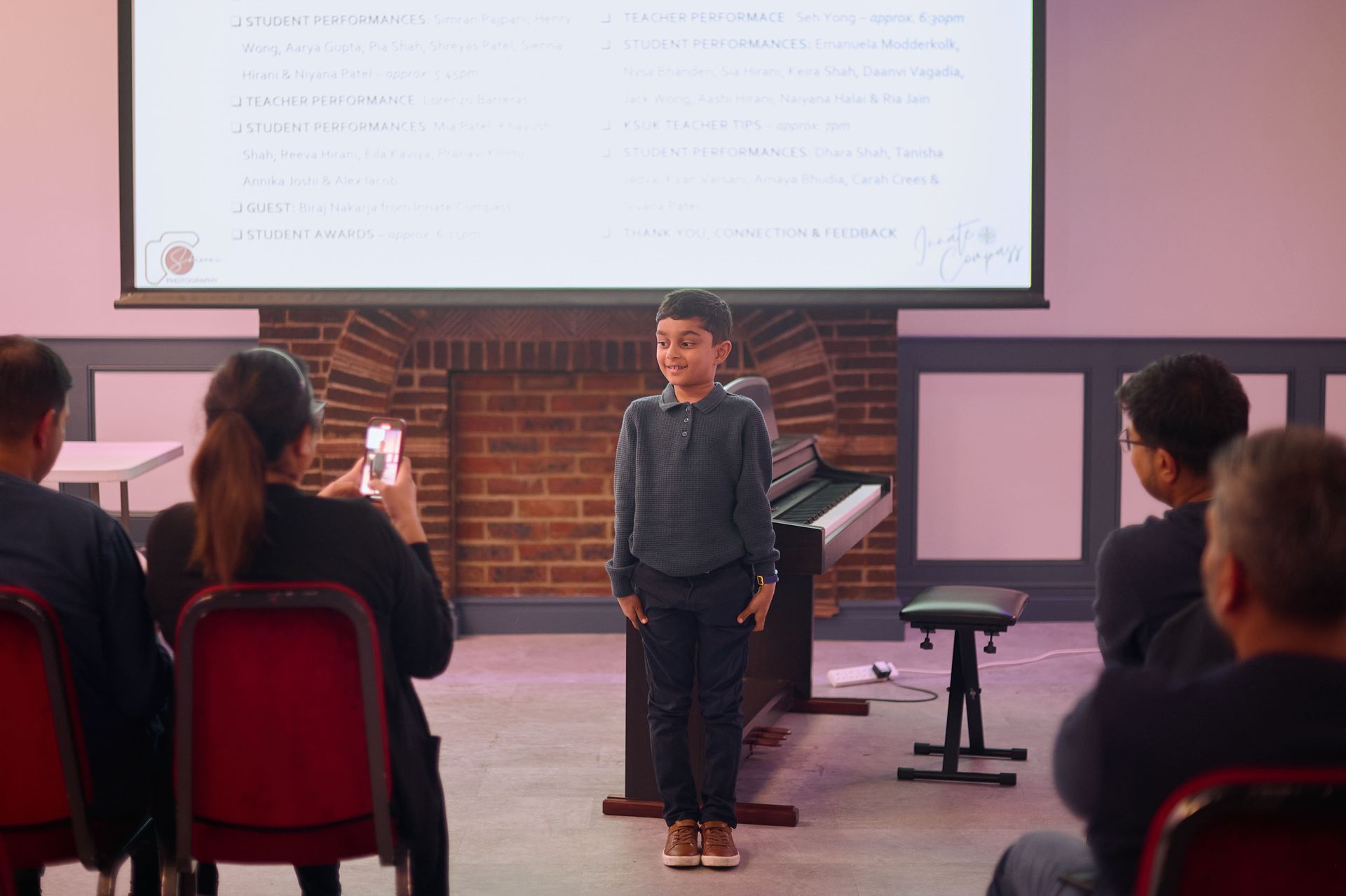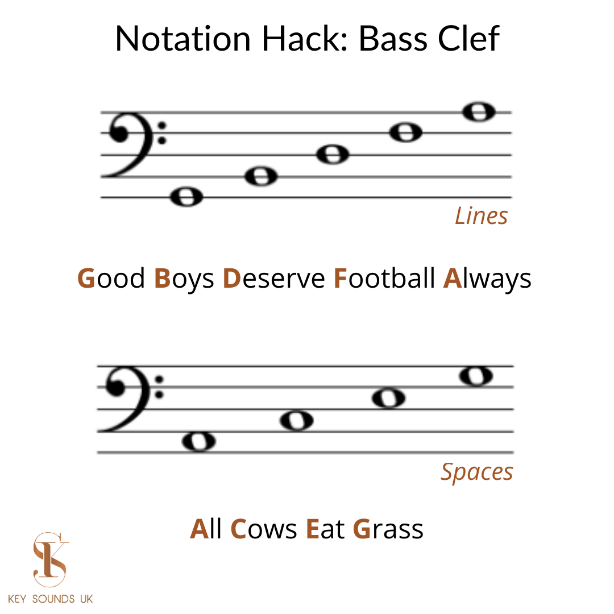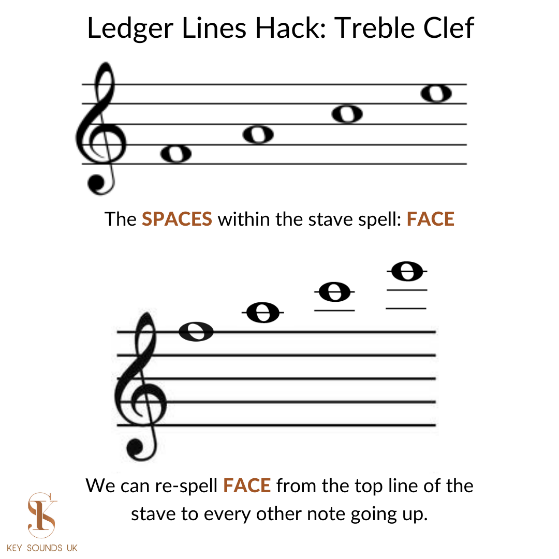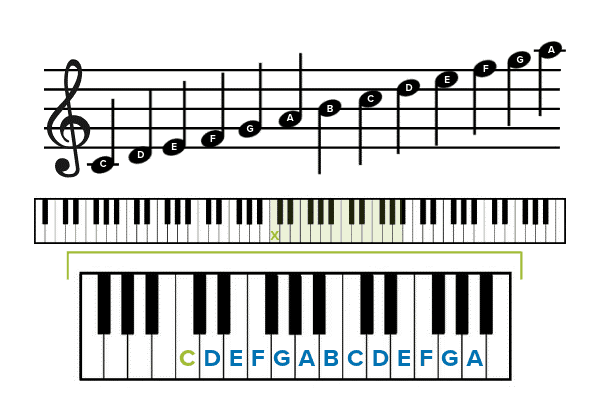How to Learn to Read Sheet Music Faster

Although we don’t recommend this to everyone, for beginners who are really struggling to understand their keyboard geography*, we recommend they purchase piano stickers which can be stuck onto the individual keys. This will allow students to cross check reading their hand position with the music at a faster pace.
*Keyboard geography is how efficiently we can navigate the layout of the piano keys with the sheet music.
2. Treble Clef and Bass Clef
The Treble Clef can also be called the ‘G Clef’. This is because the first curve at the bottom crosses the letter G line which is found on the second line up on the stave.
Similarly, the Bass Clef can also be called the ‘F Clef’. This is because the large dot on the left-hand side of the clef where we would begin to draw the clef is on the second line down on the stave which is where we would find letter F on the music.
We can therefore use both of the alternative names of these clefs to work out notes on our music that are closer to them, as supposed to working them out from Middle C, which would take a longer period of time.
3. Treble/Bass Clef Acronyms – spaces and lines.
In music, there are several acronyms which can help us remember the pattern of the notes within the spaces and lines on the music.
For example, in between the Treble Clef spaces we can spell the word: ‘face’. In between the Treble Clef lines, we have the acronym: ‘Every Good Boy Deserves Football.’
In between the Bass Clef spaces we have an acronym which reads: All Cows Eat Grass. In between the Bass Clef lines we have another acronym which reads: ‘Good Books Deserve Full Attention’.
4. Ledger Lines
Ledger lines are notes which are written below or above the stave.
Sometimes reading ledger lines can feel quite daunting but it’s important to bare in mind that the same patterns and rules apply when travelling from a line to a space on the music.
If we remember from section three of this article, the Treble Clef spaces spell the word ‘face’. We can also re-spell the word ‘face’ if we begin from the top line of the stave and ascend upwards on the music.
For most of us, we don’t tend to read ledger lines as frequently as the notes within or not too far out from the stave, so we may struggle to read ledger lines as fluently. However, using this hack will help you become more familiar with notes with the ledger lines faster!
5. The relation between the keyboard and sheet music
Every note found on piano sheet music corresponds to a piano key. While there are 88 keys in total on a full-sized instrument, they are made up of letters with and without symbols which repeat in steps as we move across the keyboard. To learn how to read sheet music you would learn how to recognise the notes on the stave and find them on the keyboard based on the patterns you have been taught.
As you can see there are a set of two black keys followed by three black keys. This pattern then repeats across the keyboard alongside the letter names.
6. Memorise Key Signatures
Finally, in order to read more complex music faster, you’ll need to learn and understand key signatures.
Key signatures tell us which flats and sharps we have in a scale, exercise or piece of music, rather than writing out the individual sharps or flats next to the notes. **
In the illustrations above you’ll find acronyms which will help you learn and memorise the order of the flats and sharps within key signatures and how they appear within the music.
**Writing a sharp, flat or natural sign directly next to a note in a scale, exercise or piece is known as an ‘accidental.’
Remember that when you are trying out these hacks to look at them little and often but also be patient with yourself. If you wish to know more about these hacks and resources, feel free to take a look around our website or connect with us directly.









